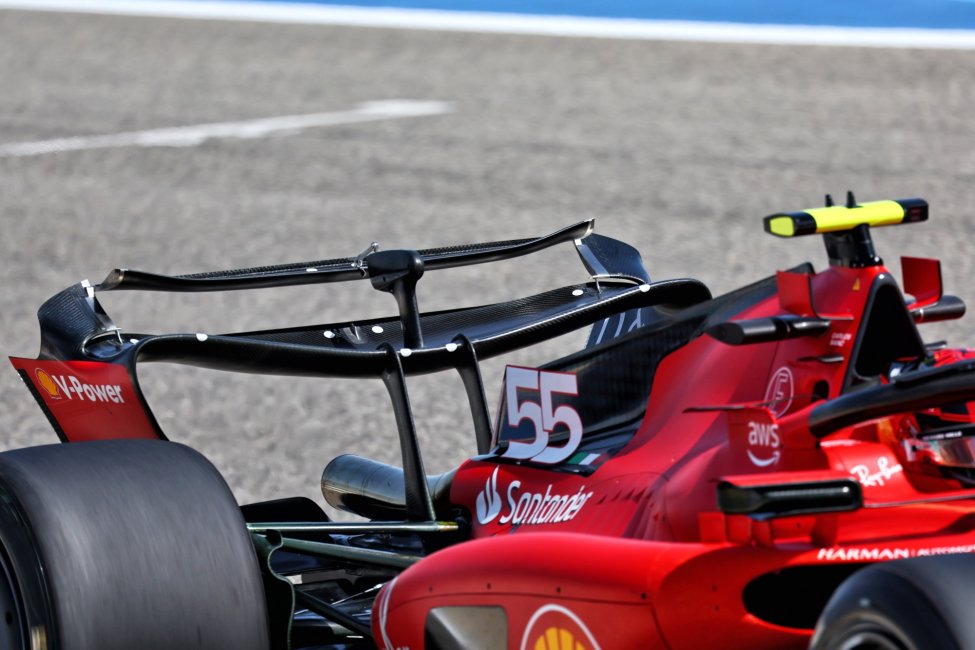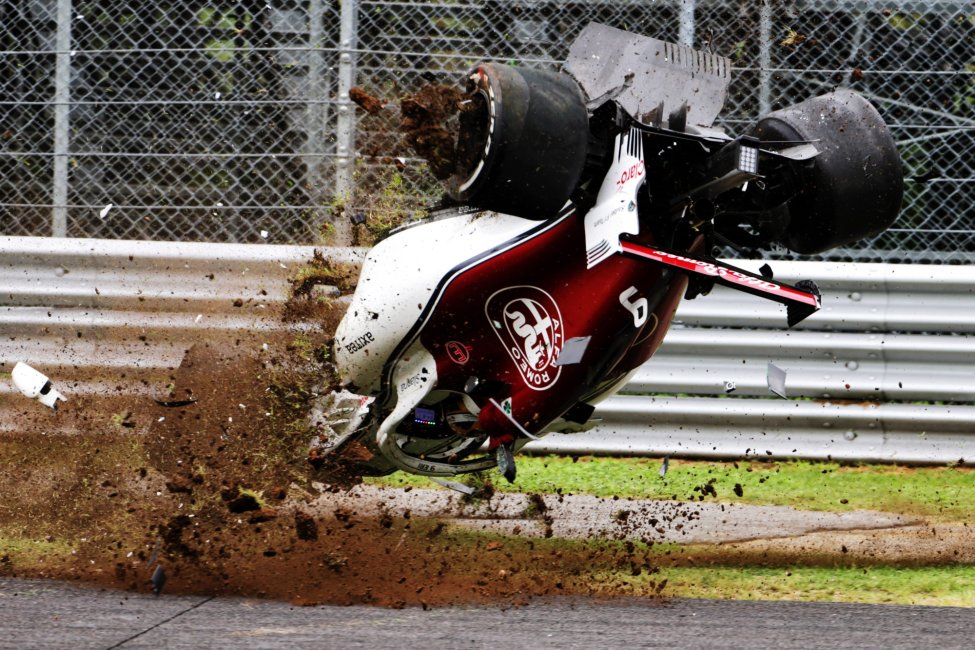What is DRS in F1? Drag Reduction System explaind
DRS: a common term within F1. But what is the DRS and when is it used? We'll explain it step by step.

What does F1 DRS mean?
DRS, or the Drag Reduction System, is a topic that garners significant attention in Formula 1 circles and is widely recognized as a pivotal factor within the sport. DRS means Drag Reduction System and is used to improve overtaking in Formula 1.
What is DRS in F1?
DRS was added to the world of Formula One in 2011. The sport was experiencing a lack of overtaking opportunities at the time, which led FOM (Formula One Management) to look for a solution. The result? DRS. The Drag Reduction System is a tool which temporarily reduces the downforce and aerodynamic drag on an F1 car. As a result, there is less resistance to higher speeds, meaning increased top speeds are achievable. But how does DRS work in F1?
How does DRS work in F1?
When using DRS, the rear wing of a Formula 1 car temporarily flips open. This always happens on a straight. This is because on a straight it does not matter if a car loses downforce; top speed is most important here. Before the corner, the wing closes again so drivers can tackle the braking zones and corners with optimal levels of downforce. Leaving the wing open can lead to severe consequences. This is what Marcus Ericsson experienced during free practice for the Monza Grand Prix. His rear wing failed to close, causing him to lose control of his car and roll over several times.
When are you allowed to use DRS?
DRS may only be used in a few places on the track. This is to ensure safety and keep racing competitive. A Formula 1 circuit has several so-called DRS zones. These are straight stretches on the track where it is allowed to activate DRS. Most circuits have two DRS zones, but there are exceptions. For example, the Monaco circuit contains only one DRS zone and the Bahrain circuit has three places where DRS can be activated.
DRS Detection point
To use DRS, a driver must drive within one second of his/her predecessor. This is measured at a so-called detection point. A detection point is just before a DRS zone. It does not matter whether the car in front of him/her is a direct competitor or a lapped car. Suppose Max Verstappen drives half a second behind Lewis Hamilton at the DRS detection point, he is allowed to deploy DRS. Is he driving a lap later - within a second - behind lapped car Kevin Magnussen? Then too he is allowed to use DRS. Using DRS results in more top speed, which gives the attacking driver an advantage during overtaking.
DRS zones
In Formula 1, DRS (Drag Reduction System) zones are designated sections of the track where drivers can activate DRS to reduce aerodynamic drag and increase straight-line speed, aiding overtaking opportunities. The activation of DRS is triggered when a driver passes through a DRS detection zone, which is typically located before the DRS activation zone. Once a driver crosses the detection zone and is within one second of the car ahead, they are allowed to activate DRS when they reach the DRS activation zone. The number and length of DRS zones vary from track to track and are determined by race organizers and the FIA.
Using DRS During the race
There are some restrictions regarding the use of DRS. For example, DRS may not be used during the first two laps of a race and during/just after a neutralisation (Safety Car and Virtual Safety Car). Even in rainy conditions, the feat of engineering remains out of the question.
In the first few laps of the race, most drivers still drive very close together. For safety reasons and to give every driver equal opportunities, the rear wing remains closed during this period. In the rain, an F1 car needs more downforce, to reduce the chances of a "slide". So the use of DRS during wet conditions is prohibited. During a neutralisation, all cars drive a lot slower, making the use of DRS unnecessary.
How often can you use DRS?
A driver decides how often he/she uses DRS. However, he/she can only use DRS in the zones and moments authorised.
Who deploys DRS?
In principle, the attacking driver opens the rear wing when attempting to overtake. However, it may be the case that nearby cars can also take advantage of the DRS. If Max Verstappen and Charles Leclerc are battling for position and hold each other up, then chasing cars may also have a chance to catch and pass with the help of the DRS.
How much speed does DRS add?
Opening the rear wing creates an opening of up to 85 millimetres. The loss in downforce results in about 15 kilometres of extra top speed. The exact amount of extra speed depends on several factors, such as the length of the straight, the amount of wind and more.
When was the DRS introduced?
DRS, or Drag Reduction System, was introduced in Formula 1 in the 2011 season as a means to improve overtaking opportunities during races.
When can DRS be used in F1?
Who triggers DRS in F1?
Why is DRS controversial in F1?
How many times can F1 drivers use DRS?
Don't miss out on any of the Formula 1 action thanks to this handy 2026 F1 calendar that can be easily loaded into your smartphone or PC.
Download the calender
